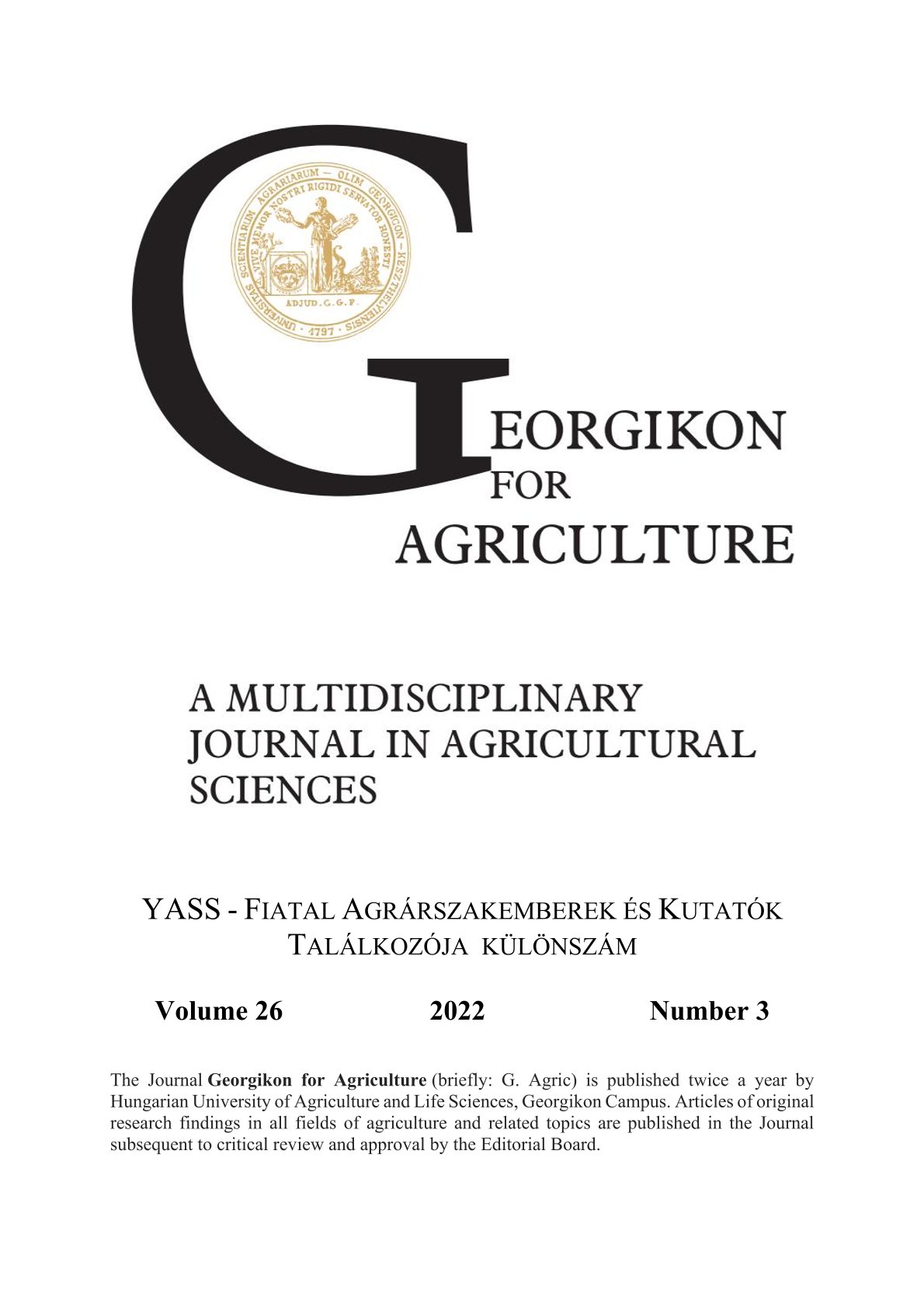A klímaváltozás káros hatása a szőlőre (Irodalmi kitekintés)
Keywords:
climate change, global warming, viticulture, abiotic stressAbstract
Continuous climate change affects the whole biosphere. Anthropogenic activity is accelerating this naturally occurring process. Climate is an important factor in agriculture, and thus in viticulture, as it has a fundamental impact on the habitat of plants and animals. The new conditions pose a new challenge to vine growers, with the current warming trend creating largely unfavourable conditions. On the one hand, direct damage (sun damage, drought, frosts, hailstorms, etc.) and, on the other hand, indirect damage (emergence of new pathogens: Aspergillus sp., Xylella fastidiosa) are putting an extra burden on farmers. Extreme weather events have become more frequent, and uneven rainfall and drought are a particular problem for viticulture. Extreme weather forces producers to make extra heavy investments: irrigation, ice nets, frost protection. In addition to the high cost of planting, the sector is also characterised by labour shortages. With current grape purchase prices, high input prices and the cost of irrigation, which is slowly becoming essential for crop security, planting does not pay for itself. In order to mitigate the effects of climate change, researchers are creating opportunities for adaptation through continuous technological improvements. The long-term physiological impact of some of these techniques is not yet known. These technologies can be used to influence the duration of vine development, ripening time and quality parameters.
References
Amanifar, N., Taghavi, M., Izadpanah, K., Babaei, G. 2014. Isolation and pathogenicity of Xylella fastidiosa from grapevine and almond in Iran. Phytopathologia Megiterranea, 53(2). 318–327. https://doi.org.10.14601/Phytopathol_Mediterr-12647
Farkas, J., Szeitzné, Sz. M., Varga, J., Beczner, J., Kovács, M., Varga, L. 2013. A Kárpátmedence éghajlatváltozásának kihatása élelmiszer-biztonságunkra. Magyar Tudomány, 174(2). 147–157.
Freire, L., Passamani, R. F., Thomas, A. B., Nassur, R. C. M. R., Silva, L. M., Paschoal, F. N., Pereira, G. E., Prado, G., Batista, L. R. 2017. Influence of physical and chemical characteristics of wine grapes ont he incidence of Penicillium and Aspergillus fungi in grapes and ochratoxin A in wines. International Journal of Food Microbiology. 241. 181–188. https://doi.org/10.1016/j.ijfoodmicro.2016.10.027
Gutiérrez-Gamboa, G., Zheng, W., Martinez de Toda, F. 2021. Current viticultural techniques to mitigate the effect of global warming on grape and wine quality: A comprehensive. Food Research International 139. 1–7. https://doi.org/10.1016/j.foodres.2020.109946
Hajdu, E., Borbásné Saskői, É. 2009. Abiotikus stressz a szőlő életterében. Agroinform Kiadó, Budapest. 36–65.
Hluchy, M., Ackermann, P., Zacharda, M., Lastuvka, Z., Bagar, M., Jetmarova, E., Vanek, G., Szőke, L., Plisek, B. 2007. A gyümölcsfák és a szőlő betegségei és kártevői. Bratislava, 238.
Hufenagel, L. Sipkay, Cs. 2010. A klímaváltozás hatása ökológiai folyamatokra és közösségekre. Corvinus Egyetem, Budapest. 13–14.
Jiang, C., Shi, Jungling., Chen, X., Liu, Y. 2015. Effect of sulfur dioxide and ethanol conncentration on fungal profile and ochratoxin a porduction by Aspergillus carbonarius during wine makin. Food Control, 47. 656–663. http://dx.doi.org/10.1016/j.foodcont.2014.08.011
Jones, V. G., White, A. M., Cooper, R. O., Storchmann, K. 2005. Climate change and global wine quality. Climate Change, 73 (3): 319–343.
Knolmajer, B., Kocsis, L., Knolmajerné Szigeti, Gy. 2018. Egy új helybenoltási módszer eredményes alkalmazása szőlőültetvények átoltására, ültetvénylétesítésre. Borászati Füzetek 28(3). 23–28. https://doi.org/10.1007/s10584-005-4704-2
Kutzbach, J. 1989. historical perspectives: climatic changes throughout the millennia. In: De Fries R.S. and Malone T F, eds Global Change and our Common Future. Washington D.C.: National Academy. 50–55.
Mika, J. 2002. A globális klímaváltozásról. Egy meteorológus kutató szemszögéből. Országos Meteorológiai Szolgálat Fizikai Szemle, 52(9). 258.
Neethling, E., Barbeau, G., Coulon-Leroy, C., Quénol, H. 2019. Spatial complexity and temporal dynamics in viticulture: a rewiew of climate-driven scales. Agricultural and Forest Meteorology, 277. 1–8. https://doi.org/10.1016/j.agrformet.2019.107618
Serra, R., Lourenço, A., Alípio, P., Venacio, A. (2006): Influence of the region of origin on the mycobiota of grapes with emphasis on Aspergillus and Penicillium species. Mycological research 110 (8). 971–978. https://doi.org/10.1016/j.mycres.2006.05.010
Terbe, I., Skezák, K., Kappel, N. 2011. Kertészeti és szántóföldi növények fejlődési rendellenességei. Mezőgazda Kiadó, Budapest. 179–184.
Downloads
Published
Issue
Section
License
Copyright (c) 2022 Knolmajer Bence

This work is licensed under a Creative Commons Attribution-NonCommercial-NoDerivatives 4.0 International License.
Cikkre a Creative Commons 4.0 standard licenc alábbi típusa vonatkozik: CC-BY-NC-ND-4.0. Ennek értelmében a mű szabadon másolható, terjeszthető, bemutatható és előadható, azonban nem használható fel kereskedelmi célokra (NC), továbbá nem módosítható és nem készíthető belőle átdolgozás, származékos mű (ND). A licenc alapján a szerző vagy a jogosult által meghatározott módon fel kell tüntetni a szerző nevét és a szerzői mű címét (BY).




